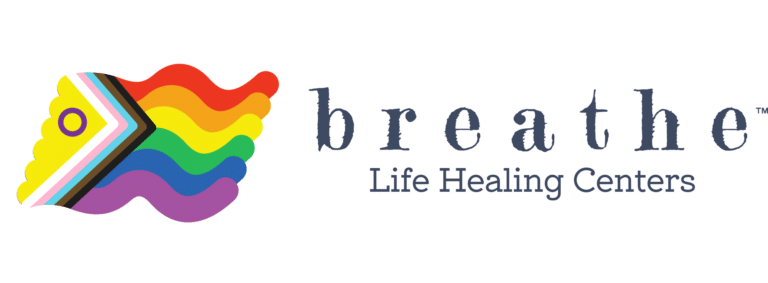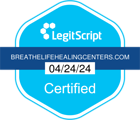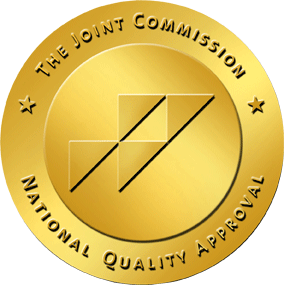Importance of Dual Diagnosis Treatment
When embarking on a journey of recovery, addressing both mental health and substance use disorders simultaneously is crucial. Dual diagnosis treatment plays an integral role in ensuring that these co-occurring conditions are managed effectively. Many individuals seeking help encounter both addiction and mental health challenges, and it’s vital to treat these interconnected issues concurrently to achieve lasting recovery.
This integrated approach allows healthcare professionals to devise treatment plans that target the specific needs of each individual. By focusing on both mental and physical health, dual diagnosis treatment aims to improve the overall wellbeing of clients. In Los Angeles, facilities like Breathe Life Healing Centers champion this dual approach, recognizing the necessity of holistic care for sustainable recovery.
Unique Approach at Breathe Life Healing Centers
Breathe Life Healing Centers offers a distinct and compassionate approach to dual diagnosis treatment in Los Angeles. Their client-centered model emphasizes dignity and support, creating a safe space for those often underserved in addiction recovery contexts. This commitment reflects the organization’s roots in activism and recovery, ensuring that each client’s journey is respected and honored.
At their Laurel Canyon Campus and Melrose Avenue Clinic, Breathe Life Healing Centers employs evidence-based therapies such as Dialectical Behavior Therapy (DBT) and Internal Family Systems (IFS). These therapies are tailored to each client’s needs, ensuring that both substance use and mental health disorders are addressed in a cohesive manner. This focus on individualized care is a testament to Breathe’s belief in the power of personalized treatment plans.
Furthermore, Breathe provides a unique blend of therapeutic modalities designed to foster transformation and change. With services including individual and group therapy, they cultivate a supportive environment where clients can work towards recovery at their own pace and in a manner that aligns with their personal journey.
Importance of Therapeutic Environment
A serene, supportive environment significantly enhances the recovery process. Breathe Life Healing Centers ensures that its facilities not only meet clinical standards but also provide a space conducive to healing. Their residential homes in Laurel Canyon offer breathtaking views that contribute to a sense of tranquility and reflection, aiding clients in their recovery journey.
Creating a healing sanctuary is paramount for individuals confronting both mental health challenges and substance use disorders. The intentional design of the centers, including features like biodynamic gardens and community spaces, fosters a sense of community and belonging. This setting not only nurtures the body but also the spirit, allowing individuals to focus on their path to recovery from dual diagnosis treatment in Los Angeles.
The therapeutic environment provided by Breathe encourages clients to engage deeply with their treatment, allowing them to explore their inner landscapes in a setting that promotes peace and reflection. This holistic approach ensures that each aspect of an individual’s wellbeing is considered and nurtured.
Comprehensive Services for Dual Diagnosis Treatment Los Angeles
Breathe Life Healing Centers prides itself on offering an array of services tailored to the diverse needs of its clientele. With dual diagnosis treatment in Los Angeles, they act as a beacon of hope for those grappling with complex trauma and co-occurring disorders. By integrating services like cognitive behavioral therapy and sensorimotor psychotherapy, Breathe addresses both addiction and mental health issues in a structured and supportive framework.
In addition to traditional therapies, Breathe offers innovative approaches such as Family Class, which involves family members in the recovery process. This engagement helps clients build the vital support systems necessary for long-term success. The organization’s focus on including family and significant others is a testament to its acknowledgment of the role these relationships play in the healing journey.
Furthermore, Breathe’s programs cater to specific groups, including young adults and professionals, recognizing that different populations have unique needs. Their specialized programs further exemplify the center’s dedication to providing bespoke treatment options that resonate with various demographics.
In essence, Breathe Life Healing Centers delivers a comprehensive package of services that cater thoughtfully to the multidimensional nature of dual diagnosis, ensuring that every client receives the care they need to thrive.
Personal Stories and Experiences
At Breathe Life Healing Centers, the power of shared experiences plays a crucial role in the healing process. Clients often find solace in hearing the stories of others who have walked similar paths. These stories of resilience and hope provide the encouragement needed to push through the toughest moments on the road to recovery.
Whether through peer-to-peer support groups or individual therapy sessions, Breathe encourages clients to share their narratives in a supportive setting. These exchanges foster a sense of community and connection, reminding individuals that they are not alone in their struggles.
Staff members, many of whom have personal recovery experiences, further enrich the treatment environment with empathy and understanding. Their firsthand knowledge of recovery challenges ensures that they can offer sincere, empathetic support to clients navigating similar journeys.
Professional Staff at Breathe
One of Breathe Life Healing Centers’ greatest assets is its dedicated and passionate team of professionals. Comprised of individuals like Brad Lamm and Mackenzie Phillips, the staff brings a wealth of experience and empathy to the table. Their commitment to providing the highest standard of care is evident in every interaction with clients.
The presence of highly skilled professionals, such as Dr. Steven Karp, ensures that Breathe remains at the forefront of dual diagnosis treatment in Los Angeles. Each team member’s unique background and experience enrich the overall treatment program, offering clients a diverse and holistic approach to their recovery.
This collective expertise allows Breathe to expertly navigate the complexities of dual diagnosis treatment, ensuring that clients receive the best possible care tailored to their individual needs.
Aftercare and Continuing Support
The journey to recovery doesn’t end upon the completion of a treatment program–an understanding that Breathe Life Healing Centers embraces wholeheartedly. They offer robust aftercare support to ensure that clients can maintain their progress once they transition back into daily life.
Programs like BreatheOUT™ provide ongoing virtual support groups for alumni, fostering a sense of continuity and community even after leaving the center. This commitment to aftercare reflects Breathe’s recognition of the ongoing nature of recovery for dual diagnosis treatment in Los Angeles.
- Weekly virtual support groups for alumni
- Continued access to therapeutic resources and professionals
- Encouragement and support from a community of peers
With these resources, Breathe ensures that clients feel supported and equipped to handle the challenges that may arise after treatment, promoting long-term success and stability.
Individualized Treatment Plans
The cornerstone of Breathe Life Healing Centers’ approach to dual diagnosis treatment in Los Angeles is their commitment to individualized care. Recognizing that each client has unique needs and experiences, Breathe crafts personalized treatment plans that acknowledge and address these differences.
By offering this tailored approach, Breathe empowers clients to engage in their recovery journey in ways that resonate with them personally. This respect for individuality is a hallmark of Breathe’s treatment philosophy, ensuring that each client receives the care and attention necessary for profound healing.
What is the best way to treat dual diagnosis?
The best way to treat dual diagnosis, which involves managing co-occurring mental health and substance use disorders, is through an integrated and comprehensive approach. At Breathe Life Healing Centers, they focus on individualized treatment plans that address both the mental health and addiction aspects simultaneously. This involves evidence-based therapies like Cognitive Behavioral Therapy (CBT) and Dialectical Behavior Therapy (DBT), combined with supportive services such as peer-to-peer support groups and family therapy. Imagine a person who struggles with depression and alcohol dependency–at Breathe, their treatment plan would not only include counseling sessions to unpack the mental health issues but also group therapy to build a support network and learn coping strategies for addiction. By treating both conditions together, clients are more likely to achieve sustained recovery and improved overall wellbeing. Have you ever considered how addressing both mental health and substance use can lead to a more holistic recovery journey?
What is the new name for dual diagnosis?
Dual diagnosis is commonly referred to now as co-occurring disorders. This term highlights the simultaneous presence of both substance use disorder and a mental health disorder, emphasizing the need for an integrated treatment approach. At Breathe Life Healing Centers, their use of this term underscores their commitment to treating clients with complex needs through personalized care plans. This shift in terminology aims to promote a deeper understanding of how intertwined these conditions are and the necessity of treating them concurrently. Have you noticed how language in healthcare can evolve to better capture the complexity of certain conditions?
What are the most common conditions with a dual diagnosis?
Some of the most common conditions associated with dual diagnosis include depression, anxiety disorders, bipolar disorder, and post-traumatic stress disorder (PTSD), often coupled with substance use issues like alcohol dependency, opioid addiction, or stimulant misuse. For example, someone struggling with anxiety might turn to alcohol to self-medicate, leading to a reinforcing cycle that can be challenging to break. At Breathe Life Healing Centers, understanding these dynamics allows for the creation of targeted interventions that address both the psychological and the physical dependence aspects. This comprehensive approach can help individuals better manage symptoms and reduce the risk of relapse. Does this approach resonate with you, considering the complexity of treating both mental health and addiction issues?
What is the treatment model for dual diagnosis?
The treatment model for dual diagnosis at Breathe Life Healing Centers is rooted in the integrated treatment approach, where both mental health and substance use disorders are treated concurrently. This model is comprehensive, involving therapies like Internal Family Systems (IFS) and Sensorimotor Psychotherapy, which help address underlying trauma that often accompanies these disorders. For example, a client might participate in individual therapy to understand their mental health condition, while also attending group sessions focused on addiction recovery, creating a balanced and supportive treatment plan. By using a variety of therapeutic modalities, clients are empowered to explore and heal from all facets of their diagnosis, promoting a more robust recovery process. Have you considered how a holistic approach might benefit those dealing with co-occurring disorders in the long term?
Why is a therapeutic environment important in treatment?
A therapeutic environment is crucial in treatment because it creates a safe and supportive space where clients can focus on healing. At Breathe Life Healing Centers, the serene setting at their Laurel Canyon Campus offers breathtaking views and tranquil surroundings that enhance the recovery process. Imagine a person struggling with both trauma and substance use–being in a peaceful environment can help reduce stress and facilitate introspection and personal growth. The intentional design, including biodynamic gardens and community spaces, fosters a sense of belonging and community, vital for those in recovery. By nurturing both the mind and body, clients are better prepared to engage deeply with their treatment and achieve lasting change. How might a healing environment influence your approach to personal growth and recovery?
How does one access continued support after treatment?
Continued support after treatment is essential to maintaining progress and preventing relapse. Breathe Life Healing Centers offer robust aftercare programs like their BreatheOUT™ initiative, which provides weekly virtual support groups for alumni. This ongoing support helps clients stay connected with peers and access therapeutic resources even after leaving the center. Imagine someone who has just completed an intensive treatment program–ongoing support ensures they have a network to lean on during challenging times and access to professionals who can offer guidance. By fostering a sense of community and continuity, these programs encourage long-term success and stability. What role do you think such aftercare services play in sustaining recovery?











